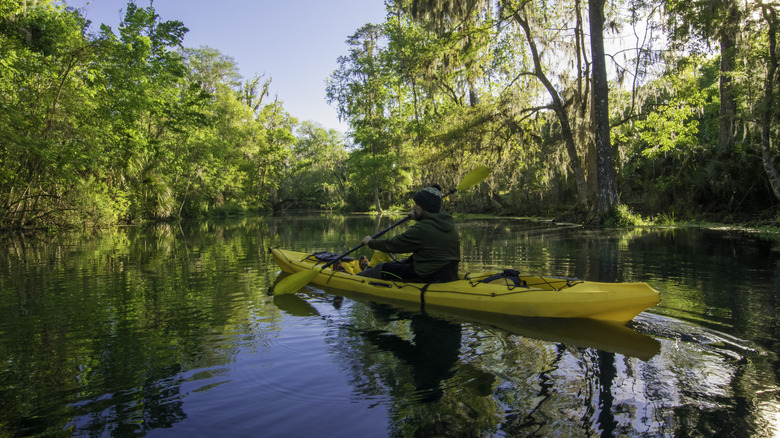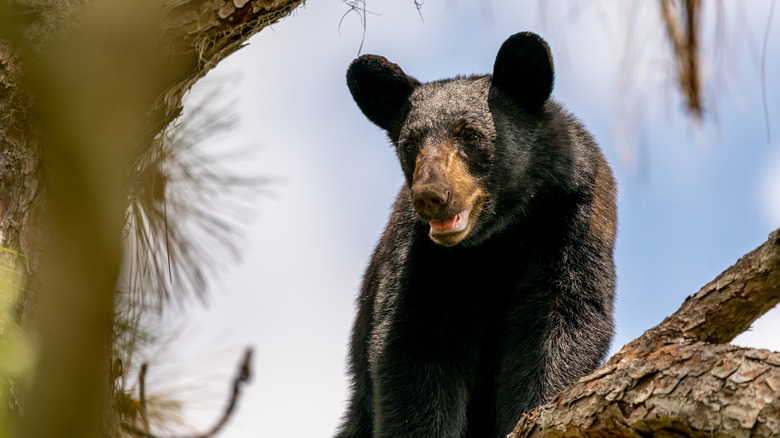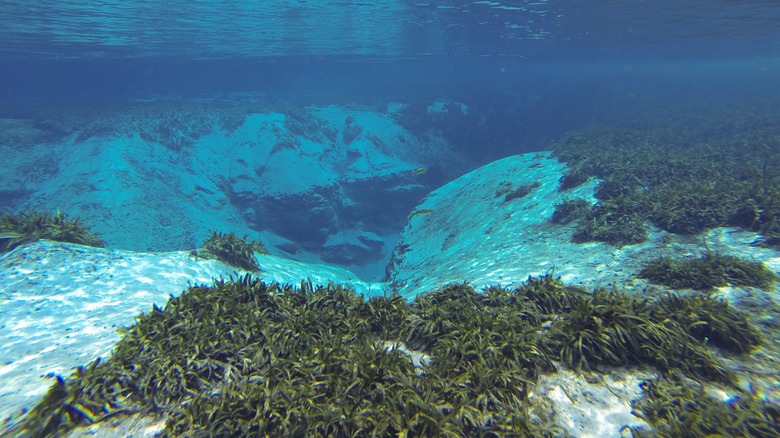Situated Between Theme Parks And Beaches Is Florida's Underrated National Forest For Endless Recreation
Florida vacationers can't be blamed for leaning heavily into the Sunshine State's gorgeous beaches, like Bahia Honda State Park, and exhilarating theme parks. For so many visitors, that's what Florida is about. But the state is an incredibly diverse outdoor wonderland and, despite a population of more than 22 million people, wild lands and wild waters are often hidden in plain sight. For instance, Florida's oldest national forest is just about an hour and 15 minutes from the Orlando airport, but it's a world away from the controlled chaos of the state's treasured theme parks.
The 387,00-acre Ocala National Forest, located north of Orlando, is home to more than 600 lakes and rivers and a dozen day-hike trails. For hikers, bikers, paddlers, anglers, and wildlife watchers, this easily accessible national forest — created by President Theodore Roosevelt by executive order in 1908 — is a great way to get away from the crowds and experience a nostalgic slice of Florida.
Experience the wildlife of the Florida forests
President Roosevelt protected the Ocala National Forest in large part to preserve the largest sand pine scrub forest in the world. These woods are home to both rare plants and wildlife, some of which are found only in Florida. For instance, the threatened Florida bonamia, a flowering vine native to the region, has a stable home in the forest. It's also home to Florida's largest population of black bears, white-tailed deer, a healthy population of American alligators, and the extremely rare Florida panther.
The forest's four major freshwater springs — including Silver Springs State Park, one of America's largest springs — are home to the curious and charismatic manatee. Because the springs' temperature is a fairly constant 72 degrees, the manatees use these waters to escape the cold ocean in the winter.
For birders, the Ocala National Forest is a great place to view very rare and federally protected species. The forest is home to the state's largest population of Florida scrub jay, as well as the red-cockaded woodpecker, both threatened species. Thanks to a very well-maintained network of trails through the forest, visitors regularly catch glimpses of its wildlife.
There's lots to do at Ocala National Forest
While the forest is easily one of the best wild landscapes in Florida, particularly for birders and wildlife watchers, the activities of the forest aren't limited to these quiet pastimes. Visitors can also ride their off-highway vehicles on nearly 300 miles of maintained OHV trails that crisscross the forest, and boaters can ply the forest's many lakes and rivers. Kayakers and canoeists are drawn to the Ocklawaha River, while trophy bass anglers cast to some of the forest's very productive lakes, like Beakman Lake, Grasshopper Lake, and Wildcat Lake.
Perhaps the most unique activity at the Ocala National Forest, though, is scuba diving. Alexander Springs, one of Florida's 27 "first-magnitude" springs, is the only natural springs within the forest's boundaries where scuba diving is allowed. Divers can explore the clear waters and even dive down to the mouth of the springs, where a continuous flow of 72-degree water bubbles up from the bedrock.
Regardless of the activity, the Ocala National Forest is a wonderful outdoor diversion from some of Florida's better-known activities, especially Walt Disney World, which has numerous rides, like Peter Pan's Flight, that aren't worth waiting in a long line for. It's a short drive from Orlando to some peace and quiet, and the chance to see the Florida that few ever experience.


